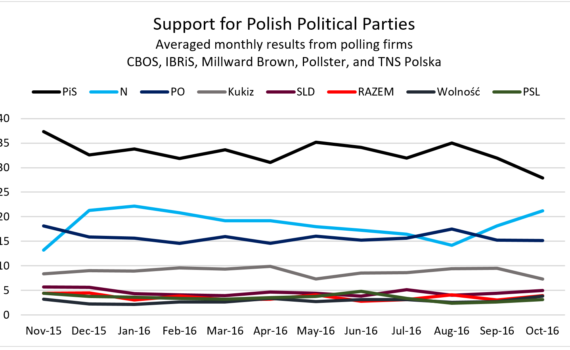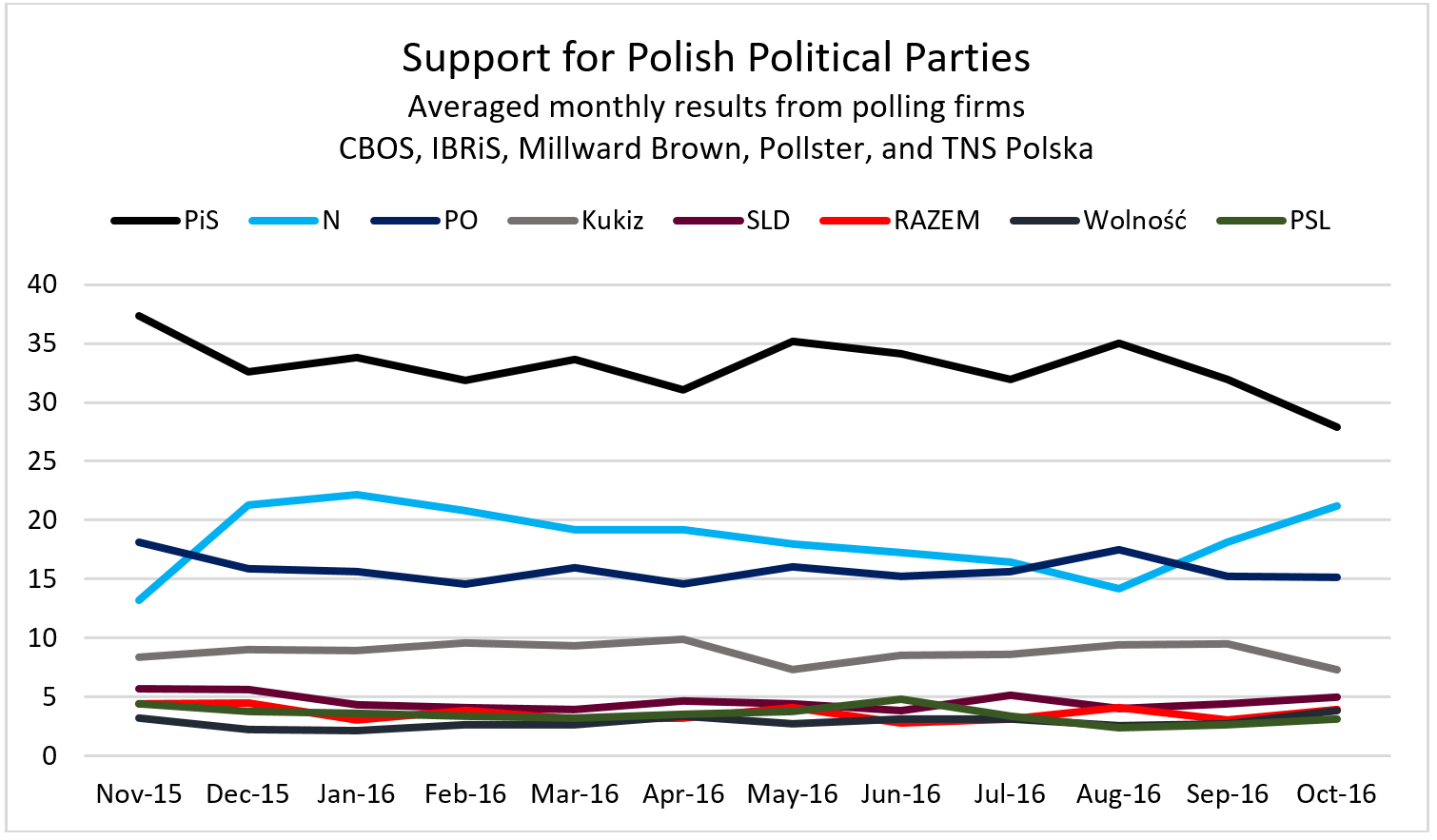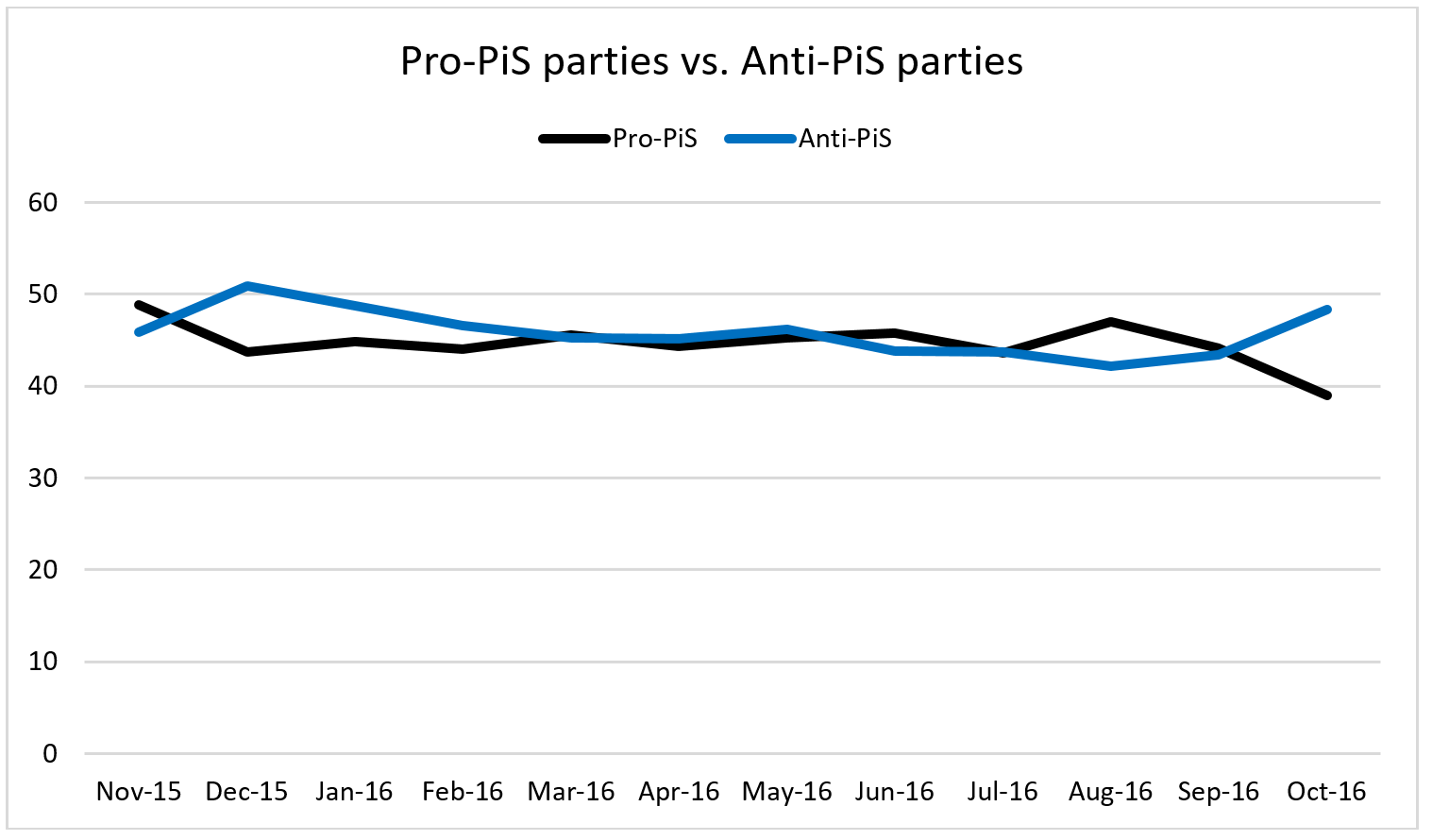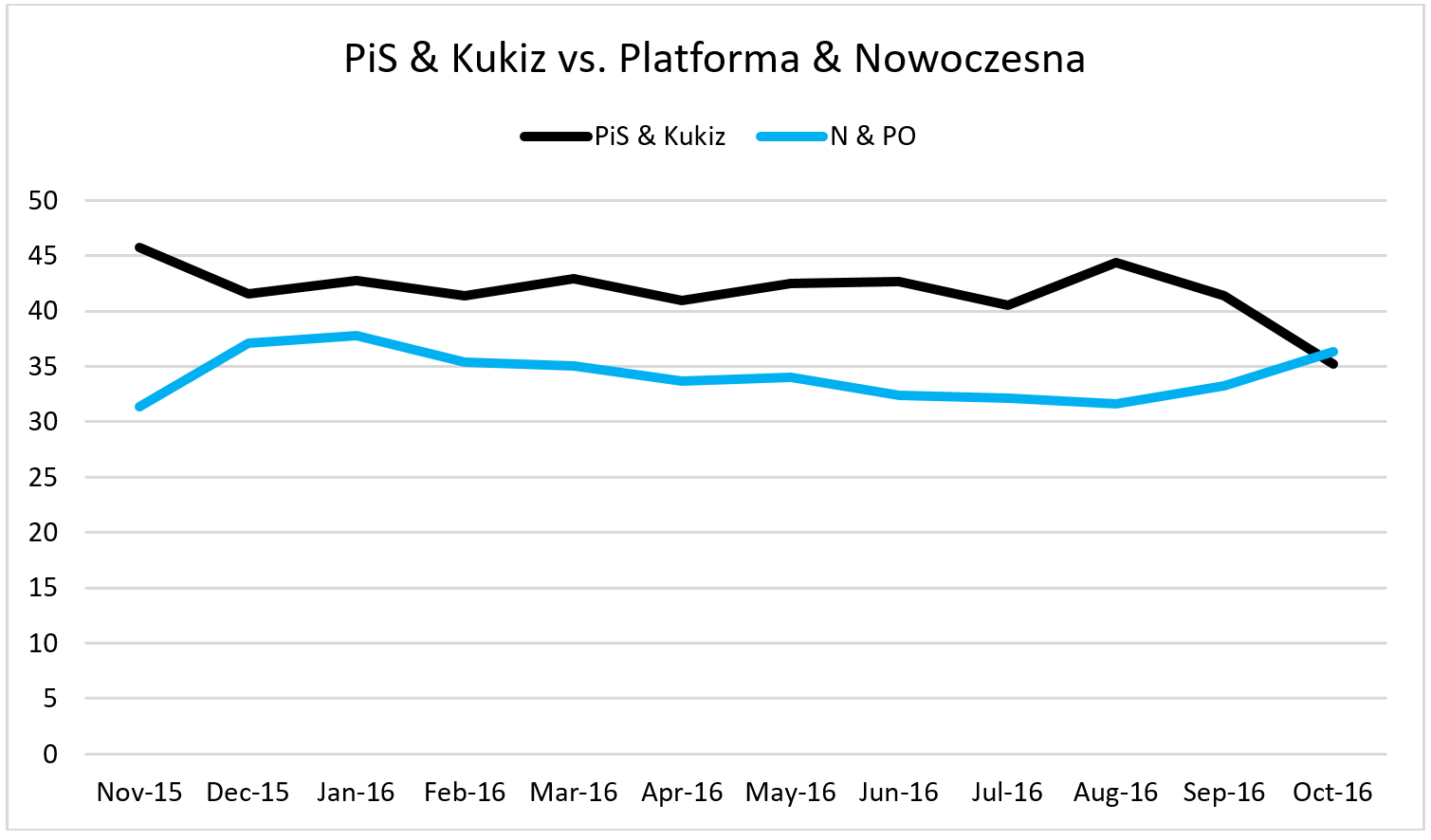
One Year Later
As we approach the one year anniversary of the Polish parliamentary elections of 2015 (October 25), it’s a good opportunity to take a look back to assess how many of the fears and hopes of last Fall have come to pass. I conducted a survey just after the PiS victory, asking Polish Studies experts to make predictions about what the future would hold, and one year later it should be interesting to see how well our forecasts are holding up.
I’ll address the more substantive issues in subsequent posts, but today I just want to consider what has happened to PiS’s popular support, with an eye towards where it might be heading. When I asked people last year to guess what would happen when it came time for the next parliamentary elections (mostly likely not until 2019), only 3% of the respondents thought that PiS would gain popularity. Another 20% expected them to lose support, but only to parties further to the right who would then be able to form a coalition government for a second term. Obviously, a lot is going to happen over the next three years, but the data from this first year has been remarkably stable. That might be changing now, because over the last two months PiS support has been falling. Is this the beginning of a trend, or just a momentary dip in support? I think it is too soon to say.
Based on monthly averages of the surveys aggregated on the website http://ewybory.eu/sondaze (including polling from CBOS, IBRiS, Millward Brown, Pollster, and TNS Polska), PiS fell quickly from their election day high, but then held steady in the low- to mid-thirties until recently. I wish I had the statistical training needed to weigh these different polling firms, along the lines that Nate Silver’s team at fivethirtyeight.com does in the United States, but even this simpler compilation (akin to what Americans can find at Real Clear Politics) provides a good overview that averages out the idiosyncrasies of the different firms (from the very PiS-friendly CBOS to the lower numbers at Pollster).

The individual fate of PiS is probably less important than the shifting divisions in Polish society more broadly between those who support Kaczyński’s overall philosophy, and those who want to preserve a liberal constitutional democracy. After all, it is very possible that PiS has lost support in recent weeks from both ends: those who are disappointed that the government withdrew the plan for a near total ban on abortion, and those who were mobilized in opposition by the fact that this plan was proposed in the first place. So if we lump together all the parties that could potentially form a coalition with PiS (Kukiz and Korwin) and those that would stand opposed to such a coalition (Platforma, Nowoczesna, SLD, Razem, and PSL), we get this picture.
 That gives us a good snapshot of the increasingly cavernous divisions in Polish society, but because of the quirks of the Polish electoral law, it isn’t necessarily relevant to the distribution of power in the Sejm. If we remove all the parties that cannot (as of now) pass the 5% minimum needed to get any seats, we would have a simpler lineup of PiS and Kukiz vs. Platforma and Nowoczesna.
That gives us a good snapshot of the increasingly cavernous divisions in Polish society, but because of the quirks of the Polish electoral law, it isn’t necessarily relevant to the distribution of power in the Sejm. If we remove all the parties that cannot (as of now) pass the 5% minimum needed to get any seats, we would have a simpler lineup of PiS and Kukiz vs. Platforma and Nowoczesna.
This last chart has the headline news: over the past few weeks, for the first time, we have reached the point where PiS would loose power if elections were held now. It would be very close, but nonetheless, the lines have crossed. It is vital to remember that PiS did not come to power because a majority of Poles supported them. With only 38% of the vote one year ago, they could seize control only because so many ballots were cast for small parties that didn’t enter the sejm. For example, a couple hundred thousand additional votes for SLD would have allowed it to enter the sejm, and that along would have blocked Kaczynski’s path. Regardless, the law is the law, and under those rules, all a party needs is enough votes to get a majority of those who vote for large parties—not of the entire electorate, much less of the entire population. Even that low bar is slipping out of their reach for Jarosław Kaczyński, assuming the current trends continue.